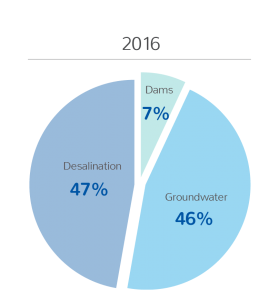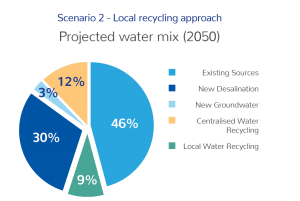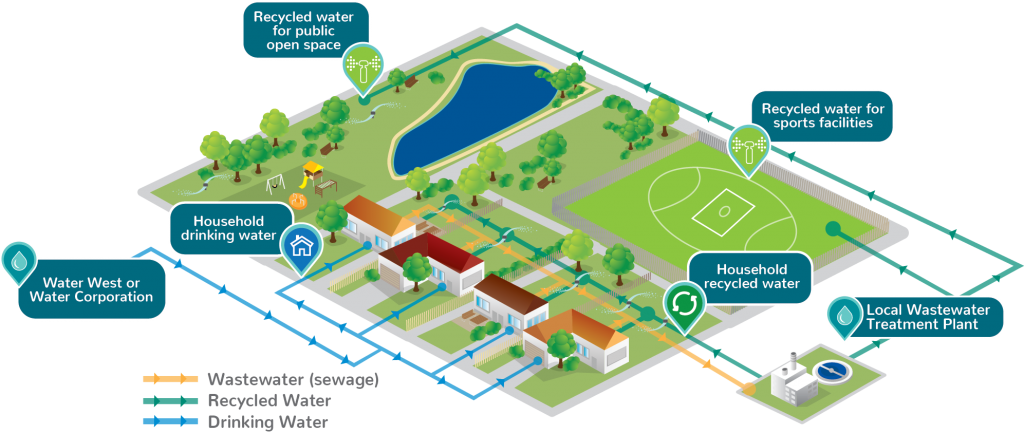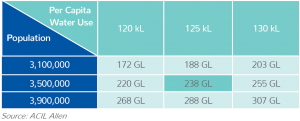Future of Perth Water
Perth’s water supply challenge
Perth is facing a significant water supply challenge driven by an increase in population and a decrease in traditional water supplies. A recent report by ACIL Allen, commissioned by Water West, confirms that major upgrades to water infrastructure are required to meet our future water needs.
According to the report, Future Opportunities for Water Services in Perth, current water supply infrastructure delivers around 300 gigalitres of water to the greater Perth area and is already reaching its limits. Water sourced in the future from rainfall, dams and extraction from our groundwater aquifers will continue to fall.
The water supply gap
By 2050, our existing dam, groundwater and desalination infrastructure will provide less than 200 gigalitres per year – a 33% fall in the drinkable water supplied to Perth.
Meanwhile, population and water demand is predicted to increase dramatically.
Using the Government’s planning scenario of a population of 3.5 million people by 2050, ACIL Allen forecasts Perth’s total water demand will reach 438 gigalitres per annum, or more than double what our current infrastructure will be able to supply.
Perth will require an additional 238 billion litres of drinking water every year. That’s more than double what our current infrastructure will be able to supply, or the equivalent of five new Kwinana Desalination Plants.
Perth Annual Water Supply Gap (Likely scenarios)
How will we fill the gap?
The decisions we make today to meet our water needs will have a significant impact on future levels of government debt, consumer water bills, and the amenity and sustainability of new communities as Perth grows.
Scenario 1 – Business as usual approach
The report shows the current water services delivery model uses valuable drinking water for non-drinking purposes and fails to capture the value of our wastewater. For example, residents are currently forced to use scarce drinking water for non-drinking uses. Our wastewater is collected and pumped long distances to treatment plants before being mostly discharged to the ocean.
Under a Business as Usual development scenario, the main new supply sources for drinking water will be additional, expensive, large-scale desalination and centralised water recycling projects. The cost of these projects and associated connection and energy supply infrastructure will be in the tens of billions of dollars. Under the current model this cost will effectively be borne by the State Government and ultimately taxpayers.
There is an alternative.
 Scenario 2 – Local recycling approach
Scenario 2 – Local recycling approach
Localised, wastewater treatment and recycled water schemes make the most of every drop of water: inside and out. By recycling wastewater, new urban communities can incorporate greener open spaces, verdant backyards and lush verges, all without the need for water restrictions.
Consumers will be better off with the adoption of local wastewater and recycling schemes, not only from improved amenities, but also from paying less for recycled water than for the drinking water they would otherwise use for non-drinking purposes. ACIL Allen estimates average household water usage bills could fall by more than 10 per cent as a result of using recycled water generated from the local treatment of household wastewater.
Local wastewater treatment and recycling is already technically and commercially feasible and being used in other parts of Australia and the world. Private sector utility providers, like Water West, can implement these local water schemes in a commercially flexible and feasible way.
 Encouraging private-sector investment in wastewater treatment and recycling would not only improve amenity in new communities, but also meaningfully reduce the future level of Government infrastructure expenditure, costs to taxpayers and associated levels of State debt.
Encouraging private-sector investment in wastewater treatment and recycling would not only improve amenity in new communities, but also meaningfully reduce the future level of Government infrastructure expenditure, costs to taxpayers and associated levels of State debt.
Economic modelling by ACIL Allen estimates that by allowing private companies to build, own and operate wastewater and recycling schemes in 50 per cent of all new urban developments, capital costs savings to the Government would be $3.37 billion and cumulative savings in drinking water would be 636 gigalitres by 2050.

Further Information
To download the full report please click here.
To view the Water West fact sheet click here.


